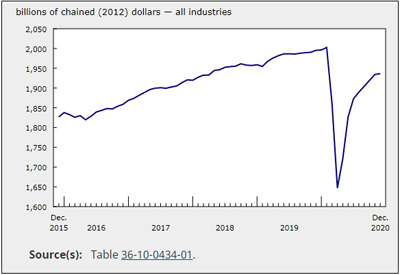Best practices – Vendor Managed Inventory (VMI) for Electrical Distributors: Why It Makes Sense to Have Suppliers Manage Your Inventory

By Tom Hoar
As a distributor considering participating in a supplier’s Vendor Managed Inventory (VMI) program, you might be asking yourself, “Why should I let a supplier manage my inventory?” It may seem counter-intuitive that you can improve inventory management and increase sales by allowing suppliers to maintain your inventory. But more and more distributors are happily doing just that with key suppliers. In fact, many distributors are now encouraging key suppliers to include them in their VMI programs. Why? Because for you the distributor it results in increased sales, improved inventory turns, and reduced administrative costs.
“The benefits (of VMI) for Graybar start with a closer relationship with an important supplier… they now have a stake in the game for the accuracy of our inventory. We get better turns, lower total inventory investment and less obsolescence and slow-moving product. This translates into better utilization of our cash and resources — in other words, profitability.”
Mike Dumas, Graybar Vice President
A proven and growing business practice
VMI is not a new concept – it’s been around since the 1980’s when Proctor & Gamble and Wal-Mart started the practice. VMI has become a standard in many parts of the retail industry and is now on the upswing in wholesale distribution industries such as electrical, plumbing, and industrial products; aftermarket truck, auto, and equipment parts.
For instance:
• In the consumer packaged goods industry, nearly all major suppliers and retail outlets participate in VMI programs
• In the electrical industry, 80% of the top 50 suppliers have an active VMI program and 66% of the top 100 distributors do VMI with one or more suppliers
Like many innovative business practices, VMI was adopted first by the leading and forward-thinking companies in each industry. The use of VMI is now expanding as both distributors and suppliers are seeing the benefits and want to realize them for more of their products and sales channels.
A straightforward process
With VMI, a supplier takes responsibility for managing your inventory of their products. Both parties agree up front on the goals and metrics — usually focused on in-stock performance, inventory turns, and transaction costs. Other agreements may be made regarding returns of excess inventory, etc.
The basic VMI process is relatively simple:
• the supplier monitors your sales and inventory levels for their products
• the supplier manages reordering calculations based on actual demand, lead time and other factors
• the VMI system recommends replenishment orders. The supplier’s VMI planner reviews and places the orders; planner and buyer communicate in exception situations
“We’ve been doing a good job of working with Hubbell to optimize sales & inventory for 20 years. But we still got a noticeable uptick in key performance metrics when we turned on VMI. We think that’s a pretty impressive endorsement.”
Mike Smith, President & CEO, OneSource/Sonepar
Why your key suppliers may be willing to take responsibility and do the work
There are several reasons why suppliers are willing to take on this activity:
• suppliers know that fewer stock-outs mean increased sales. They have learned that, with the right tools, it’s easier for them to effectively manage the SKUs you carry from them than it is for your buyers who are responsible for thousands of SKUs across dozens of suppliers. Suppliers also have more information. For instance, they know when their lead times change and can make sure they are properly reflected in the reordering calculations to avoid any supply disruptions
• with VMI, suppliers have greater visibility of actual demand, information which helps them with their own production planning
• suppliers know that distributors with whom they do VMI tend to work more closely with them on promotions, new product introductions, and other ways to increase sales, because their business objectives and communication channels are well aligned.
Why you, as a distributor, will like VMI
But back to the original question. As a distributor, why would you want a supplier involved in managing your inventory? Why would you want to allow a supplier to maintain something as important to your business as having the right inventory on hand? Here are three good reasons:
1. Improved inventory management. Because of the reasons stated above, VMI suppliers can probably do an even better job of managing their products for you than you can yourself. And they have a big incentive to do it well:
• fewer stock-outs = increased sales
• better replenishment = faster turns
2. Reduced administrative costs. Because your supplier is doing most of the work, your buyers spend much less time managing those products. Experience has shown that buyers can manage at least twice as many SKUs on VMI as they can manage using the traditional approach. This means you can re-allocate resources to troublesome products or to other more value-added activities.
• less allocated manpower = reduced cost
3. Stronger supplier relationships.
Because you and your supplier focus on the same metrics (e.g. fill rates and inventory turns) to measure the program’s success, you know your goals are always in sync, and performance is always visible. You and your supplier become stronger partners and are both better able to capitalize on opportunities and manage market swings.
• Better collaboration = reliable supply
How to decide if/when VMI is right for you
If you have not already done a conscious evaluation of what VMI could do for you, here are five easy steps:
1. To learn more about Vendor Managed Inventory, visit www.datalliance.com. You can find a wide range of articles, success stories, and other resources to explain how VMI works, answers to common concerns, and keys to success.
2. Identify the suppliers who are most important to your business and for whom you are an important channel. Target your top 10%; start with your top 6-8.
3. Talk with these suppliers. Do they have a VMI program? If so, are they interested in doing VMI with you? How does their program work? What would be required of you? How would they ensure high service levels? How would they handle overstock situations? How would you maintain visibility and effective communication?
4. Select an initial supplier with whom you have mutual trust. Confirm that your interests and theirs are well aligned. Start with a pilot — possibly at just one location — to prove the process. Once that location is working well, you can fully implement with that supplier with confidence.
5. Expand to additional suppliers at a pace that makes sense to you.
Tom Hoar is Director of Sales Electrical, Datalliance. Datalliance is the world’s largest independent VMI service provider, and in Canada currently works with 3 electrical suppliers and 13 distributors encompassing around 150 locations; Tel: 513-794-4485 513-794-4485; thoar@datalliance.com.
513-794-4485; thoar@datalliance.com.
Mini success story: VMI Success at North Coast Electric
Profile: largest distributor of electrical materials in the Pacific Northwest and Alaska
Challenge: “Not only were our inventory managers responsible for having the right product in stock when our customers needed it, but it is also extremely important to look for ways to minimize our on-hand inventories and therefore the associated costs. It’s easy to address one of these objectives while ignoring the other, but quite a challenge to achieve both.”
Results with VMI: “Because we are communicating our replenishment demands to (key supplier) daily… (VMI) has allowed us to reduce our safety stock, which directly impacts our inventory carrying costs, while at the same time improve our fill rate from 95% to 98%.
“VMI manages a high percentage of our items with little or no ongoing involvement from our inventory managers. As a result, inventory managers have the time required to spend on ‘exception’ items. This frees them to cover more items across multiple locations more effectively. The company now manages more inventory across more locations with fewer inventory managers.”











